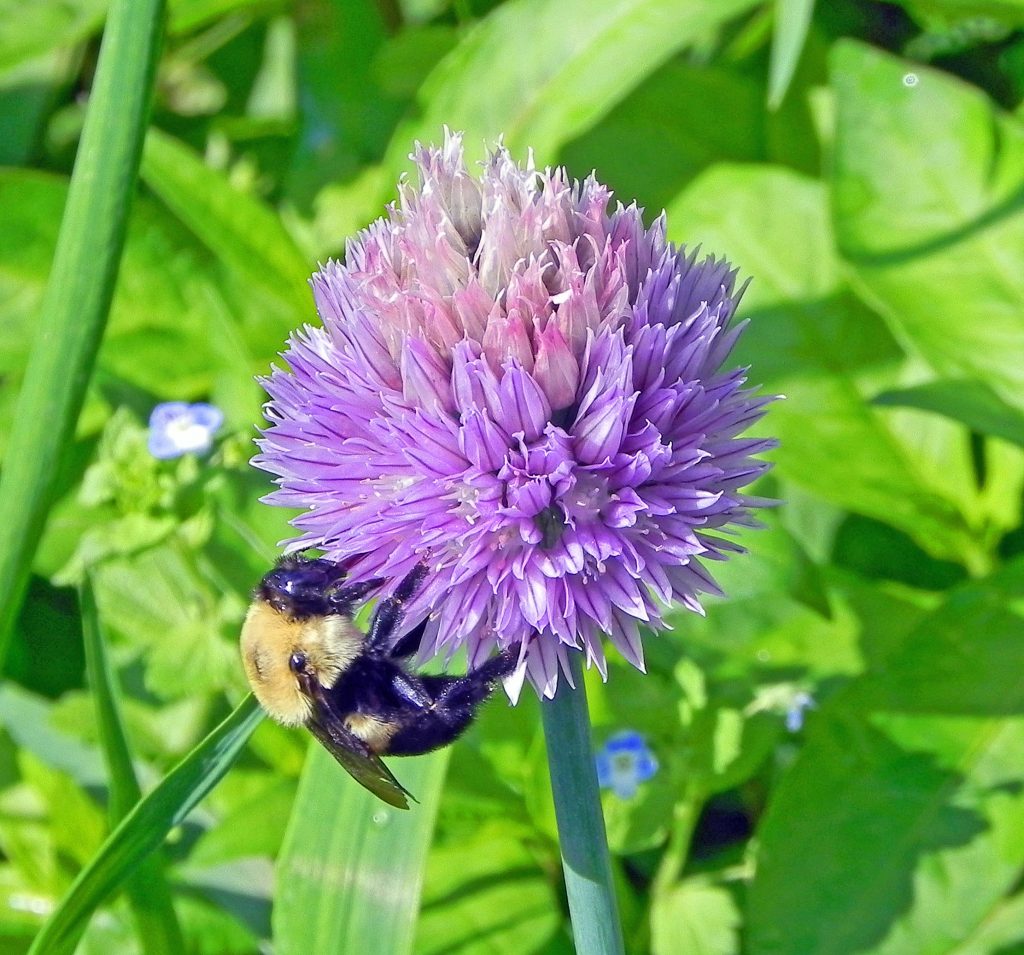Bumblebee Basics
The honeybee has taken center stage for decades. But, when it comes to pollination, humble bumblebees are super-heroes.
Learn more about how bumblebee and overall pollinator habitat is important for wild turkeys.
Bigger, stronger and hard at work even in inclement weather, the bumblebee out-pollinates many other types of bees. Attracting a healthy population of these essential pollinators will benefit any wildlife habitat, including wild turkeys.
With a better understanding of bumblebee biology, including their life cycle, nesting, and foraging preferences, and requirements needed for a healthy habitat, landowners can include bumblebees in their plans when working towards an improved and diverse wildlife habitat.
Excellent pollinators of crop plants such as blueberries, cranberries, tomatoes, apples, peppers and many other fruits and vegetables, bumblebees are just as important for pollinating plants in the wild. With their large, strong bodies, they fly in cool, windy weather. Their long tongues allow them to manipulate complex flowers to reach hidden nectar and pollen resources. While most native bees are only active for five- or six-weeks, bumble bees are active for the entire growing season. As generalist foragers, they feed on a wide variety of plants over a long period.

Most native bees are solitary and work alone, but bumblebees, like honeybees, are social bees. An annual colony may have as many as several hundred members tending to the queen and the hive, rearing the young, and bringing in food resources.
Pollinators are in decline due to pests, disease, pesticide use and a loss of habitat, which results in a lack of food resources, nesting and overwintering sites. The good news: there are simple steps we can take to support bumblebees and pollinators wherever we live. Incorporating the following steps can make your landscape and wildlife habitat more bumblebee friendly.
- Food – Include flowering plants that provide nectar and pollen from early spring through fall. As generalist foragers, bumblebees feed on native wildflowers, flowering trees, flowering weeds and planted annuals and perennials. Sunflowers are excellent pollinator plants; flowering weeds provide valuable nectar, and forage.
- Shelter – Don’t be too tidy. Leave areas for queens to find overwintering and nesting sites such as leaf litter, brush piles, overgrown grassy areas, old stumps and fallen logs, and rock piles.
- Avoid insecticide and pesticide use whenever possible.
- Leave oasis areas of native flowering plants along field and yard edges, ditches, and meadows.
Annual Bumblebee Colony Cycle
Spring – The queen emerges from winter hibernation, establishes a new nest, lays eggs, and rears the first workers. It’s a five-week cycle from egg to adult.
Summer – The queen continues laying eggs. Workers gather food, raise brood, and the colony size increases.
Late Summer – New queens are reared. Colony size begins to decrease. Males are reared. The old queen will soon die.
Late Summer into early Autumn – Virgin queens mate with males. Males die. Mated queens search out winter hibernation.
Winter – New queens remain dormant until spring. Learn more about how pollinator habitat is important for wild turkeys.
